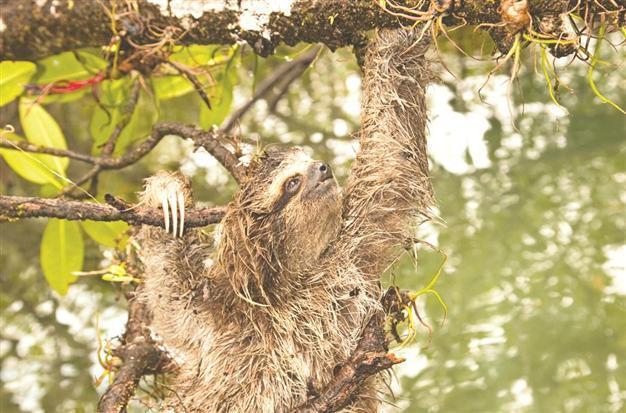Conservaton experts reveal 100 most threatened species
SEOUL - Agence France-Presse

A pygmy three-toed sloth (top) and a Tarzan’s chameleon are among the most threatened species in the list. AP photos
Conservation experts released a list yesterday of the world’s 100 most threatened species and warned that only a changed public and government mindset could save them from imminent extinction.The list compiled by the Zoological Society of London (ZSL) in a report titled “Priceless or Worthless?” comprised 100 animals, plants and fungi deemed first in line for extinction. “All the species listed are unique and irreplaceable. If they vanish, no amount of money can bring them back,” said the report’s co-author, Ellen Butcher.
“If we take immediate action we can give them a fighting chance for survival. But this requires society to support the moral and ethical position that all species have an inherent right to exist,” Butcher said.
The ZSL report was released in Jeju Island in South Korea where some 8,000 government officials, NGOs, scientists and business chiefs from 170 nations are gathered for the World Conservation Congress.
Conservationists fear those species included in the list, like the Tarzan’s Chameleon from Madagascar and the Pigmy Three-toed Sloth from Panama, will be allowed to die out because they provide humans with no obvious benefits.
While monetizing nature remains a worthwhile necessity for conservationists, the wider value of species on the brink of extinction should not be disregarded, the ZSL report said.
“The whole world has become more utilitarian and looking for what nature can do for us,” ZSL’s director of conservation, Jonathan Baillie, told AFP. “Governments have to step up to the plate and declare whether these species are priceless or worthless; whether we have a right to drive them to extinction,” Baillie said.
“If we can’t save the 100 most threatened, what hope is there for the rest of life on the planet?” he added.
The Jeju congress, held by the International Union for Conservation of Nature (IUCN), is taking place against a drumbeat of scientific warnings that a mass extinction looms.
In a report issued at the Rio+20 world summit in June, the IUCN said that out of 63,837 species it had assessed, 19,817 run the risk of extinction due to depleted habitat, hunting and climate change.
At threat are 41 percent of amphibian species, 33 percent of reef-building corals, 25 percent of mammals, 20 percent of plants and 13 percent of birds, the update of the prestigious “Red List” said.
Many are essential for humans, providing food and work and a gene pool for better crops and new medicines, it said.
















